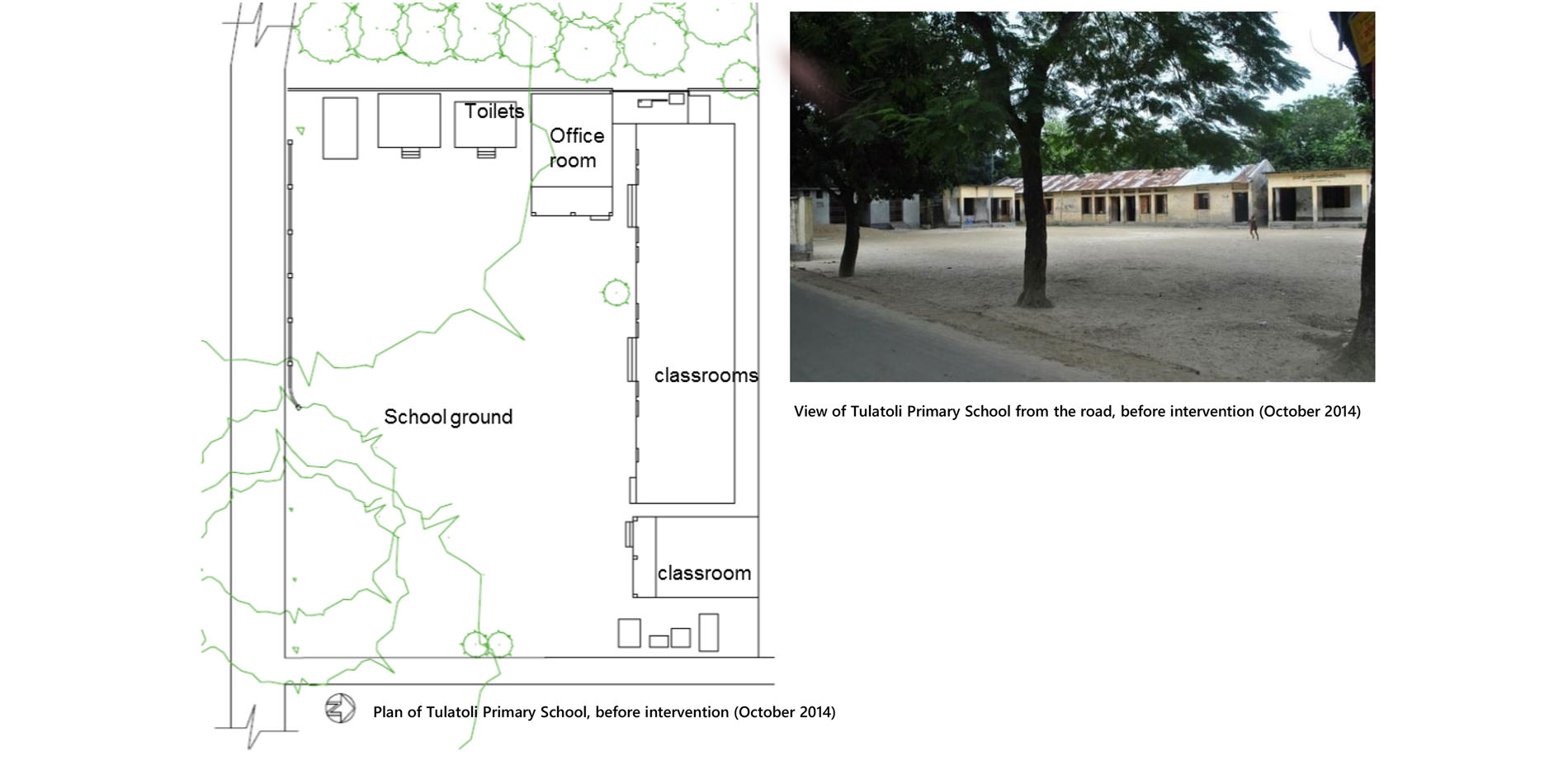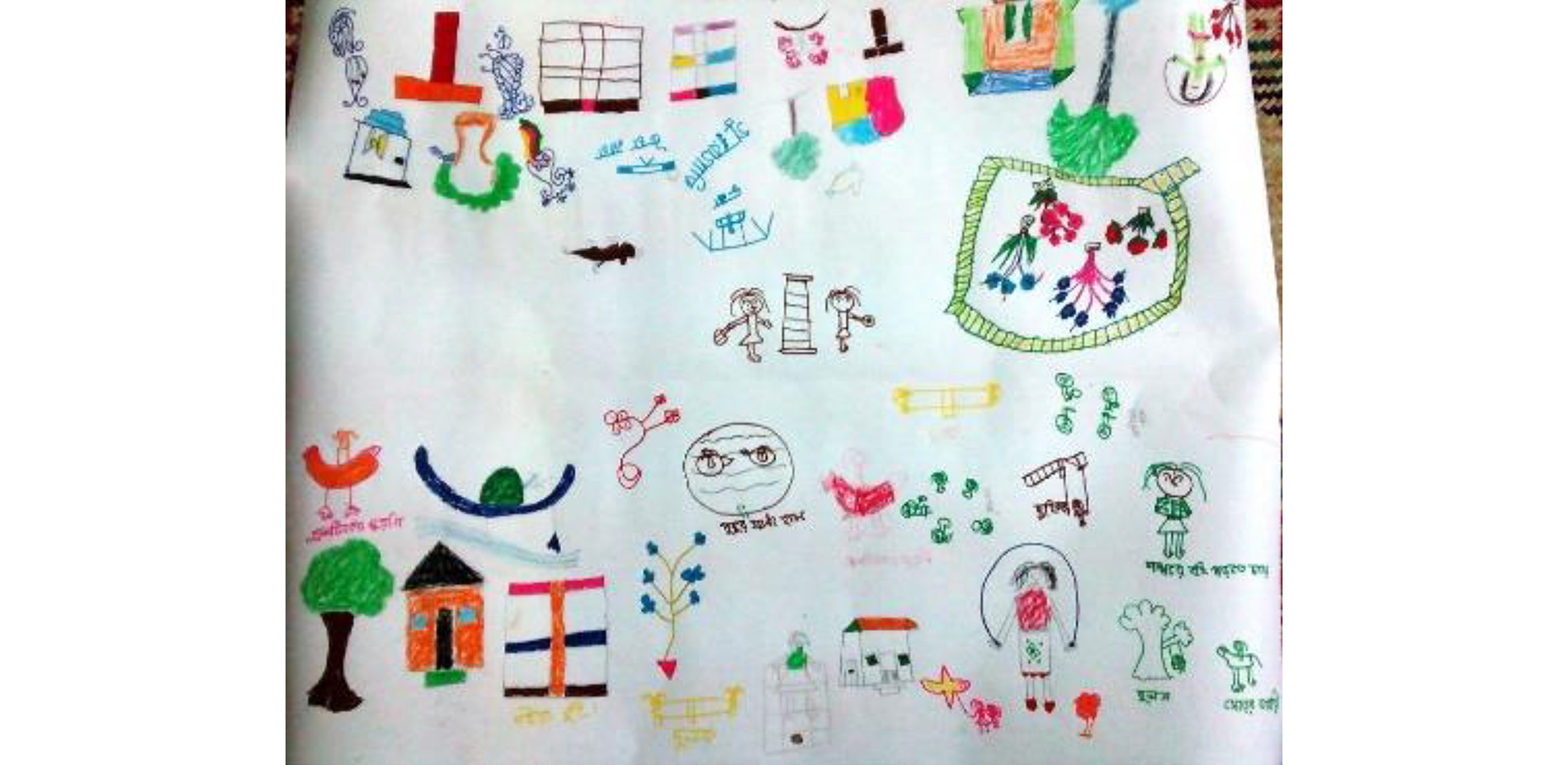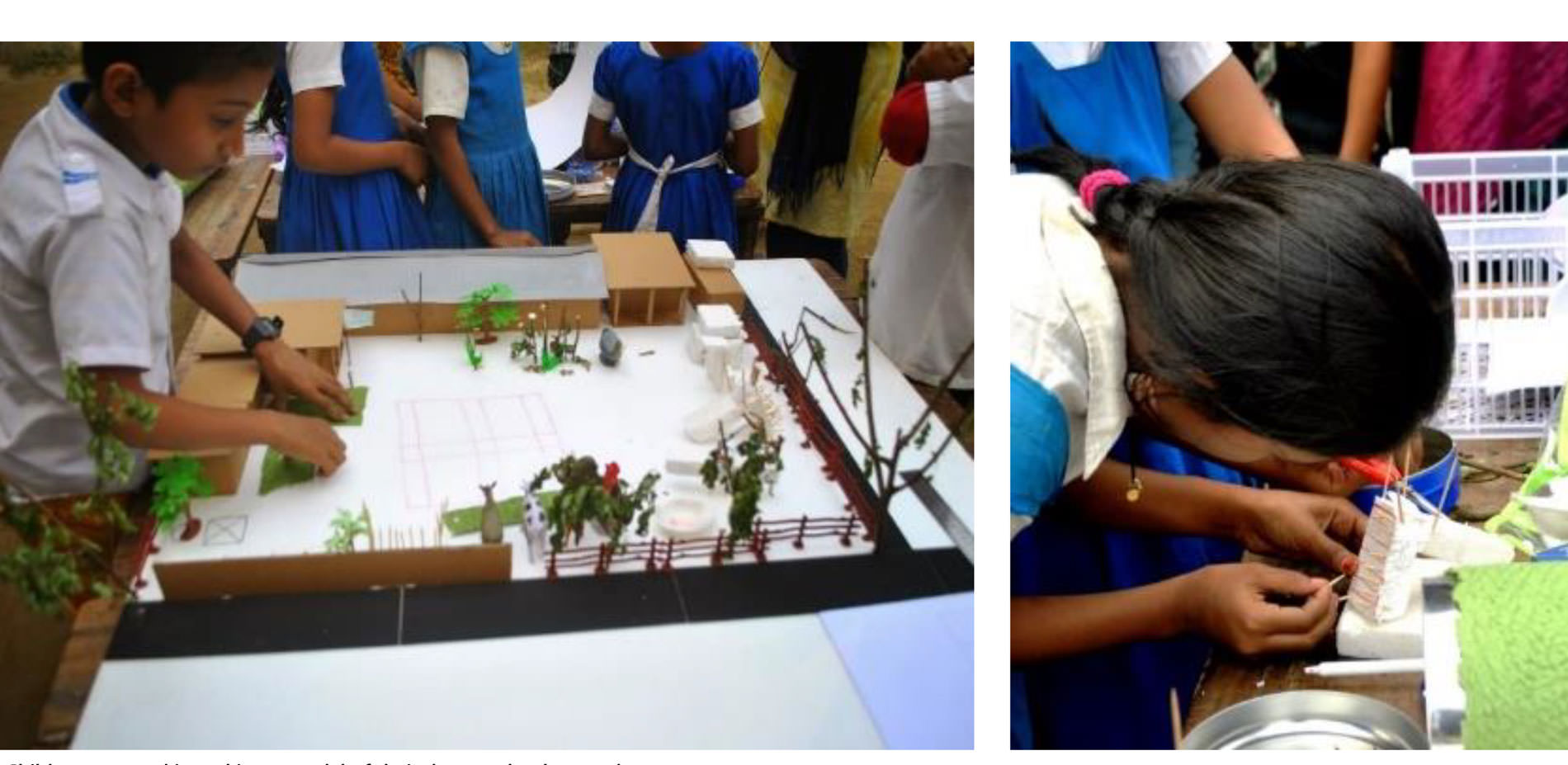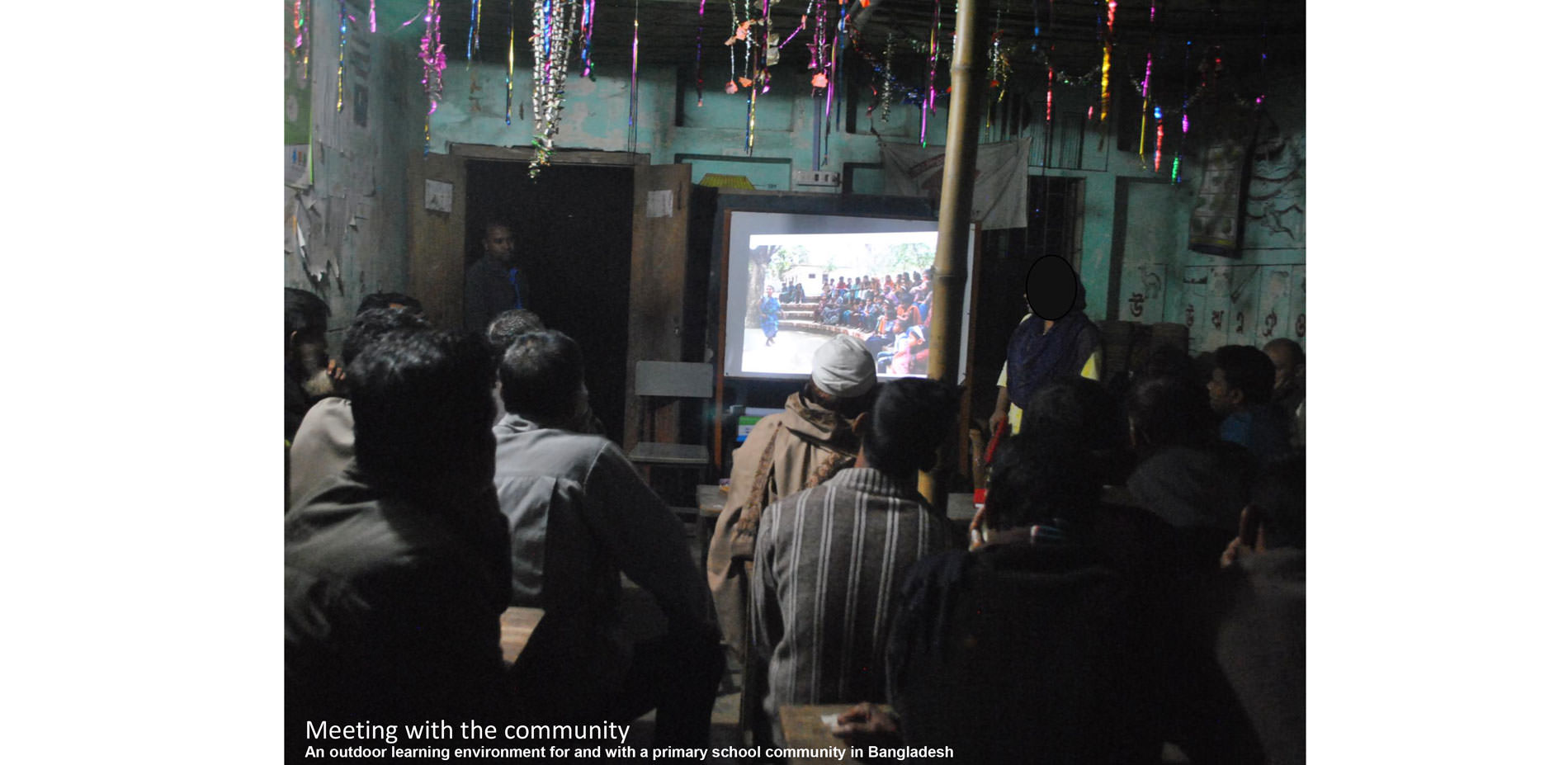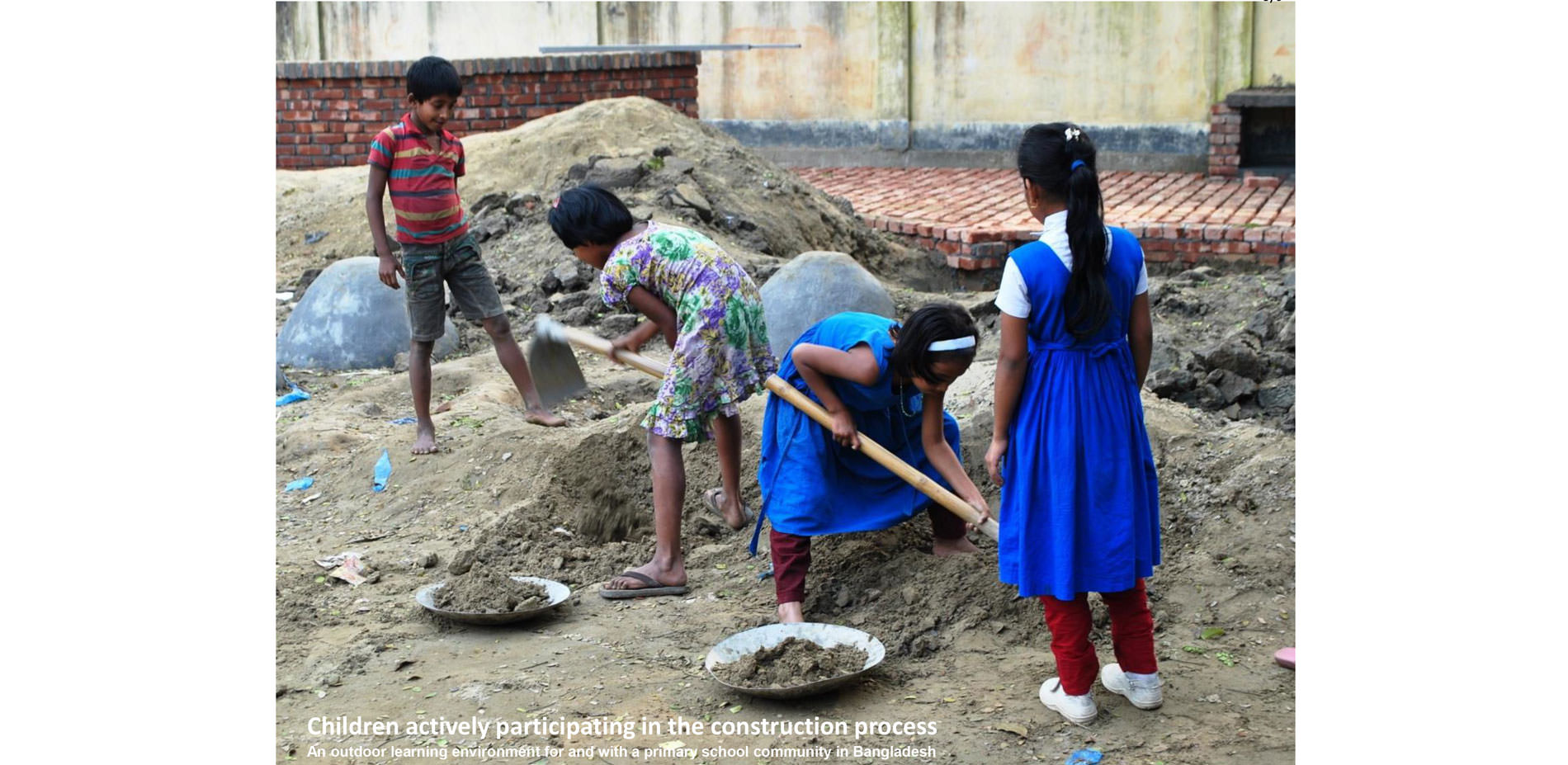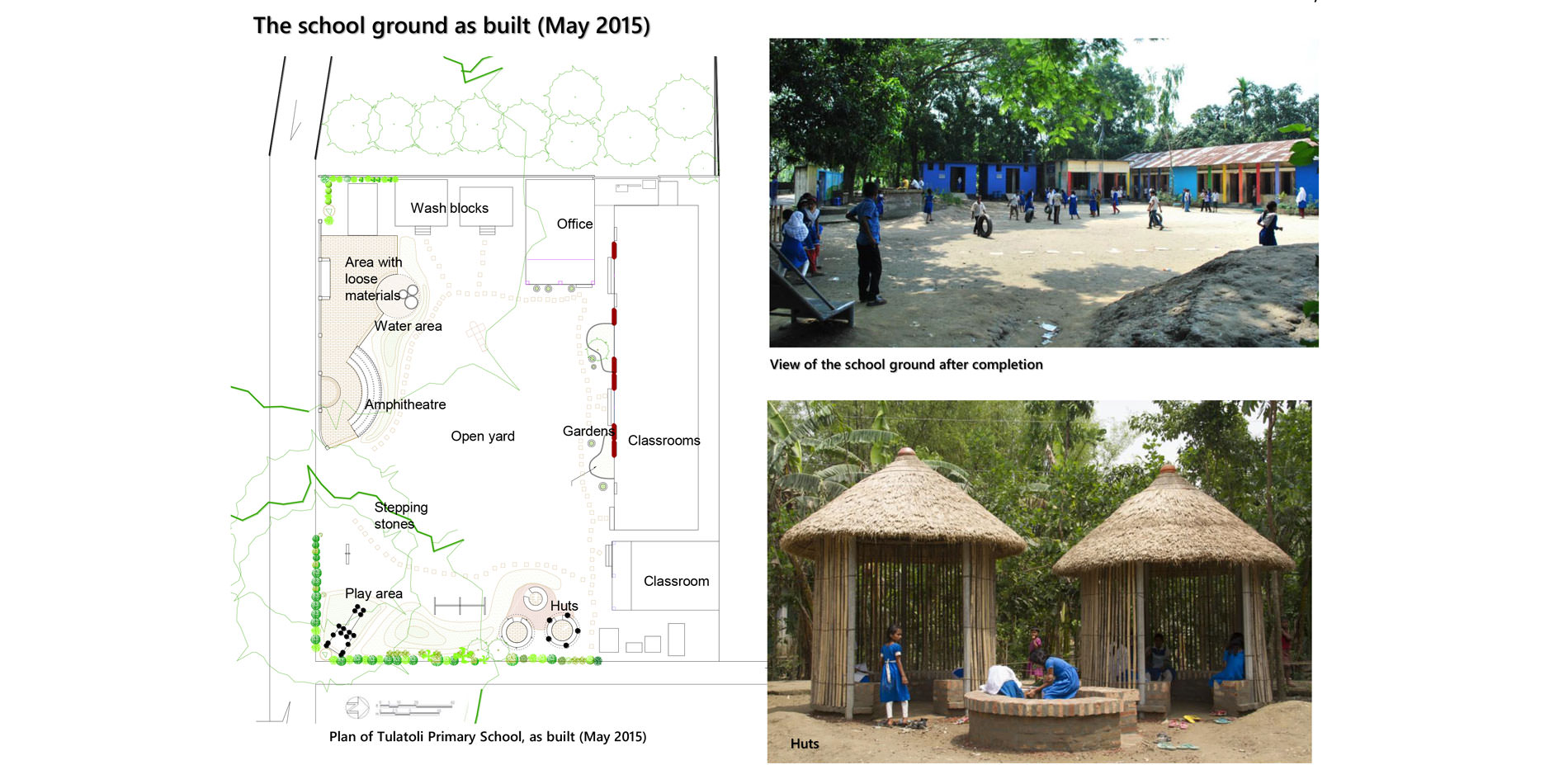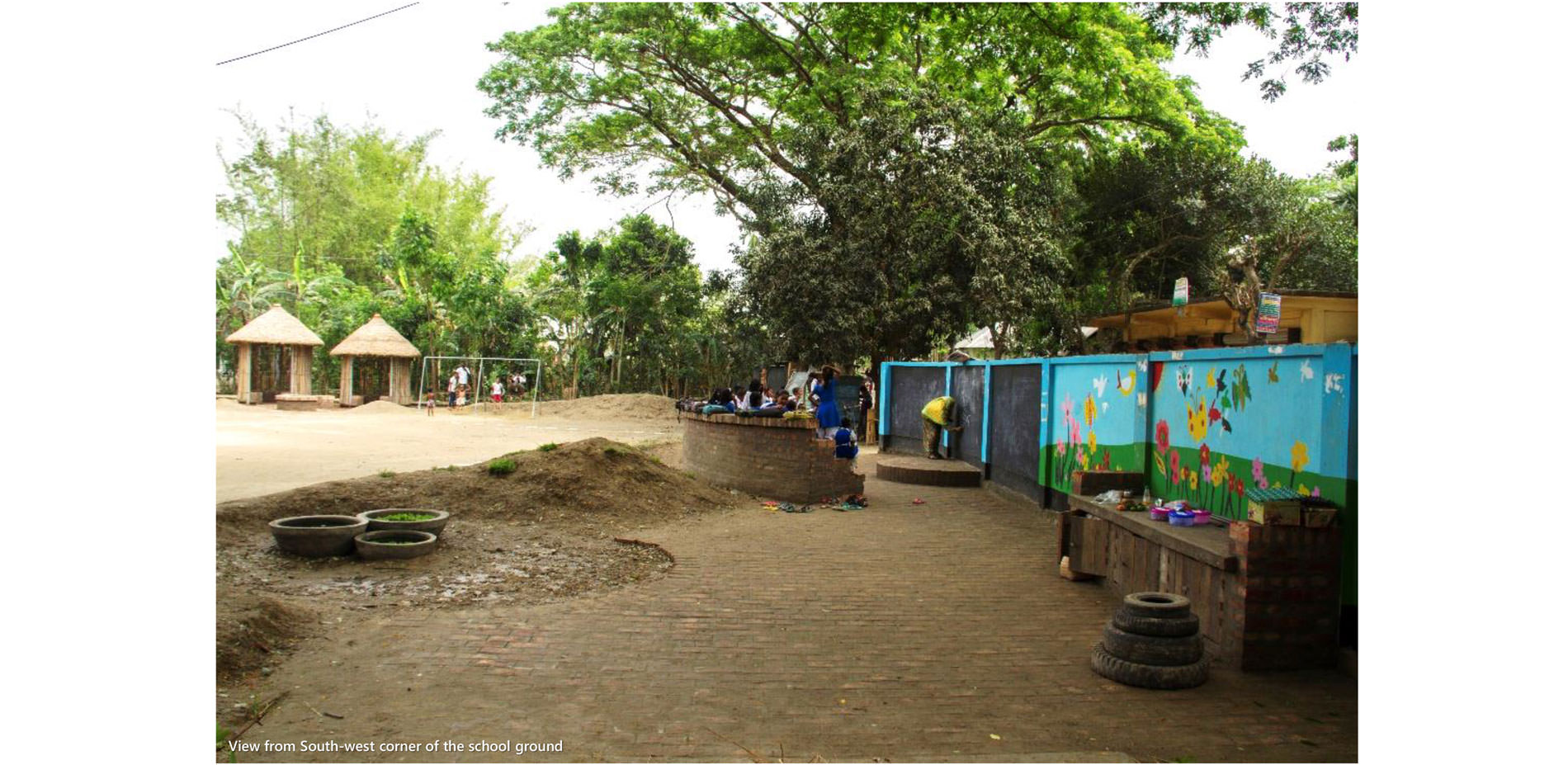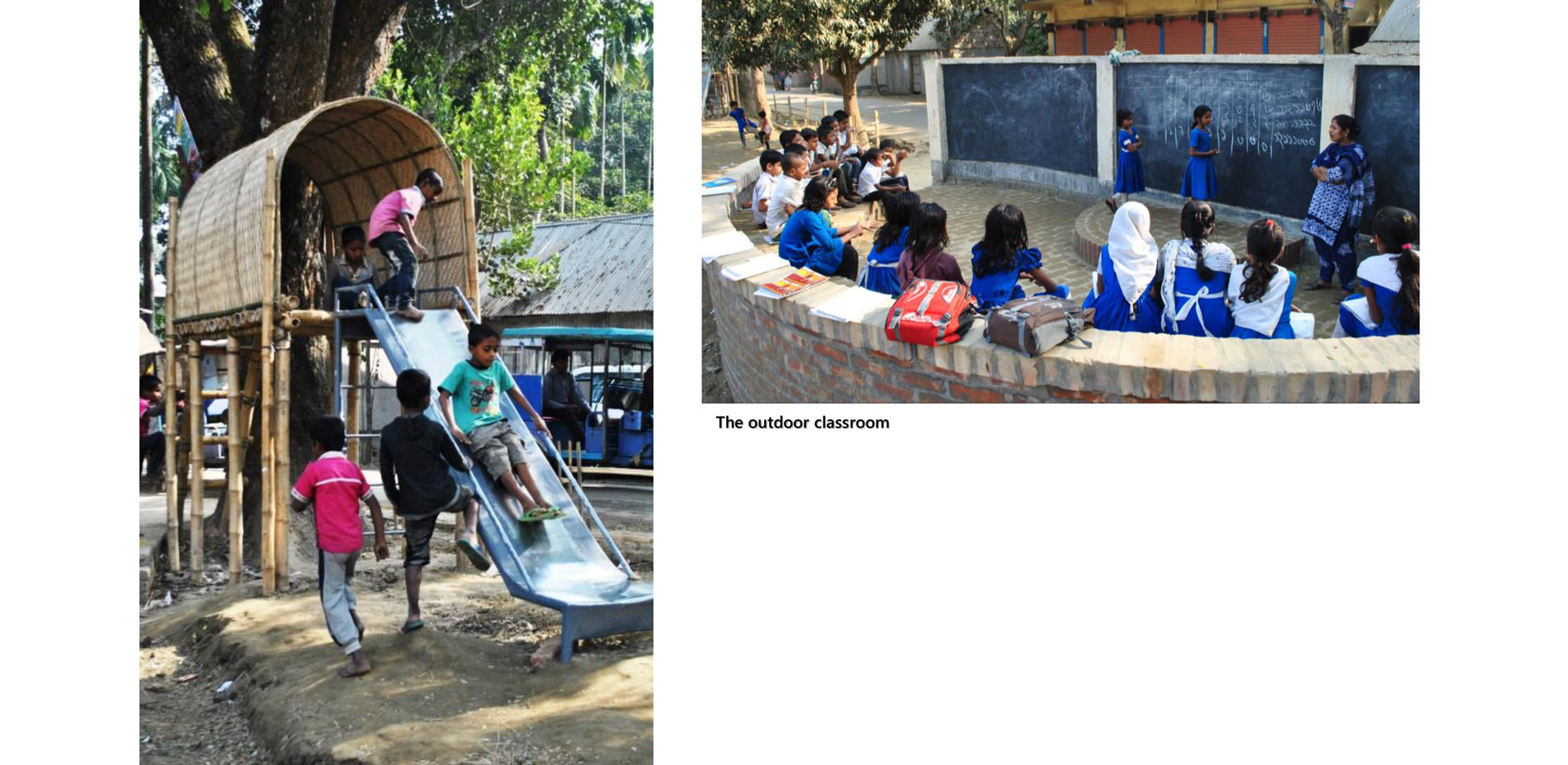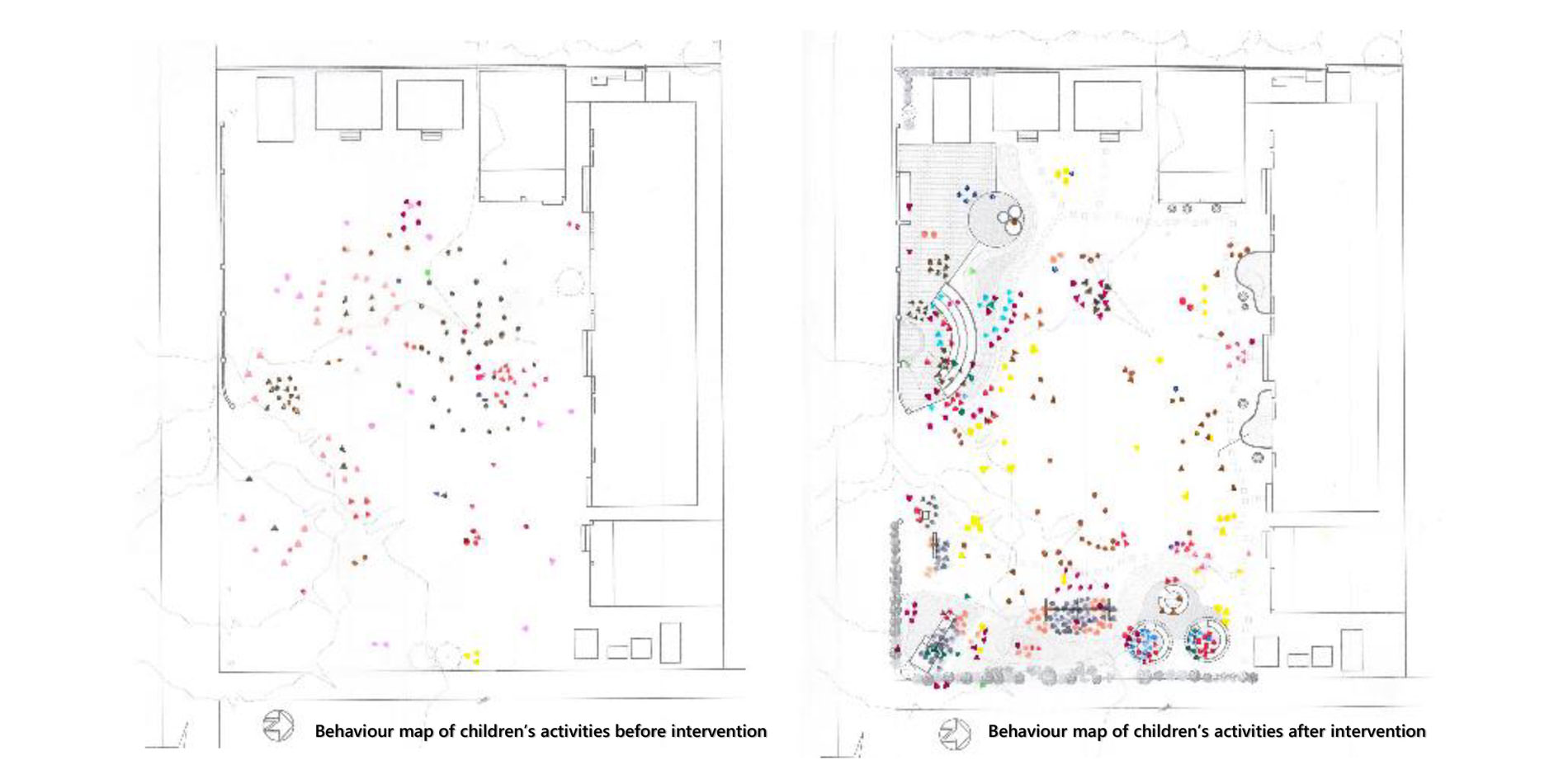An outdoor learning environment for and with a primary school community in Bangladesh
HONOR
Student Community Service Award
Bangladesh | Matluba Khan, Student Affiliate ASLA | Client: Tulatoli Primary School | Faculty Advisors: Simon Bell; Sarah McGeown; Eva Silveirinha de Oliveira
The University of Edinburgh
Look at the before and after to see the difference it makes every single day in those children’s lives, and that it will year after year.
- 2017 Awards Jury
PROJECT CREDITS
- Students and teachers of Tulatoli Government Primary School, Bangladesh
- Detail design of individual settings: Matluba Khan & Fuad Abdul Quaium
- Research Assistant: Kasfia Alam Khan
- Research Support Staff: Abdullah Al Shafi Khan & Abdullah Al Kafi
- Volunteers: Ahammad-al-muhaymin, Ananya, Pankaj, Shihab, Rubama and Salima
- Special thanks to the parents and community people who participated in different phases of development.
PROJECT STATEMENT
Tulatoli Primary School is situated some 80 miles from Dhaka, the capital city of Bangladesh. Children’s drop-out rates and low attendance levels at primary schools being the main concern, the school authority was keen to look into this issue from a different perspective. The goal was to investigate the role of the school landscape on children’s learning and their motivation. The design and construction process was informed by existing evidence and theoretical models integrated with the preferences of children, teachers and the community. Local builders and carpenters used their skills while some students of the leading architecture school in Bangladesh volunteered to apply their knowledge. Participation in the design and construction and later use of the different settings for learning and play has created a sense of belonging among children and the community. The children performed better in exams, due in part to the enhancement of their learning experience, including interaction with the range of elements provided in the school ground. The outdoor amphitheatre has also become a meeting place for mothers and the elderly.
PROJECT NARRATIVE
An outdoor learning environment for children is a project implemented in a rural Government primary school in Bangladesh with the aim of empowering children and the community and enhancing children’s education experience. The aim was to explore the role of landscape design in eliminating some key problems of the community i.e. children’s dropping out of school and the achievement gap.
Primary schools are the first formal institutes in majority countries of the world, where children aged five to 12 years spend most of their day time. Therefore, school and/or classroom architecture as a possible influence on children’s learning has become an emerging issue in the field of design and research. The outdoor environment of primary schools, though a major part of the primary school premises, is often ignored in school-design as it is not directly linked to the education of children. Although, open spaces have been found to be the most favourite places of children in the whole school environment in relevant studies, outdoor environments of schools are often not utilised to their full potential due to poor design (primarily focusing on physical activities e.g. in Australia, the USA and the UK) or lack of design (e.g. in Bangladesh and India) (Malone and Tranter, 2003). Barren school grounds can invite negative behaviour among children (Samborski, 2010), whereas experience in natural environments can mitigate those behaviours (Roe & Aspinall, 2011).Research findings indicate the benefits of designing school grounds for children’s physical activity and free play, however, the relationship between the design of school grounds and children’s learning is yet to be explored, particularly in developing countries.
Bangladesh is struggling with gender gap, high drop out rate and poor competence in primary education. Less than 50 % achieve the standard competence level of their grades. The Government primary school I worked is situated in Raipura, about 80 kilometres from Dhaka, the capital city of Bangladesh. Most of the people live in the lower economic group. The classrooms are poorly lit and ill ventilated; the children feel uncomfortable and bored. Most children do not come back to school after lunch break. Therefore, the school ground was designed and developed as children’s outdoor learning environment in order to explore how the design of a school landscape can enhance children’s learning experience and motivate them to learn (as part of the PhD Landscape Architecture Program). The research project applied a quasi-experimental action evaluation research strategy to investigate the impact of the school landscape on children’s life and the society. This included co-design and development of the school landscape with children, teachers and the community and later on evaluation of the design by comparing the outcomes with a control school with no change in the environment. Data were collected using multiple methods both before and after the intervention using focus groups, semi-structured interviews, observation and behaviour mapping, questionnaire survey. The secondary data on children’s academic attainment were also collected.
Theoretical models and evidence from previous research were incorporated with desires of children, teachers and the community to identify some behavior settings or ‘learning areas’ during the design process. Data on children's and teachers' preferences were collected using focus groups with children and teachers, children's drawings and model making workshop led by children. Parents' opinions were also sought through application of a focus group with them. Meetings were held with the members of the community, sharing the aims and goals of the project. The elements gathered through the application of all those methods were grouped to form some behaviour settings or 'learning areas' using the theory of behaviour settings (Barker, 1976) and the concept of affordance (Gibson, 1979). The preliminary design of the site was a combination of different behaviour settings or learning areas namely the natural learning area, the water area, the area with loose materials, the play area, gardens, the amphitheatre. All there settings were arranged surrounding an open yard. There was a pathway connecting all the settings and two huts to protect the children from the scorching sun and the heavy rains.
The whole development took place from October 2014 to January 2015. Children and the community actively participated in the construction process also. The children carried bricks and cured them, made the garden beds and sowed seeds and planted plants. They also drew the mural of the school boundary wall and painted themselves. The people in the community came forward with bamboo from their gardens and thatches from their farm lands. Local builders and carpenters used their skills while some students of the leading architecture school in Bangladesh volunteered to apply their knowledge. The schoolground was completed in January 2015, since then the teachers have been taking children outdoors for teaching of the curriculum and the children have been using the school landscape for informal learning and play.
The analysis of the pre-post data indicated a positive influence of the design of the landscape on children’s academic performance, their learning motivation, their attitude to coming to school and their activities in the school ground. Children are more engaged in their studies in the new school yard leading to increased motivation and improved academic performance of the children. Analysis of the data from focus groups with mothers indicates that most children who used to go home for lunch and did not return in the afternoon now ask their mothers to pack their lunch boxes. The children who left school immediately after the last bell rang, now spend time in the school ground even after the school finished. The school ground has become a community play space where children from nearby neighbourhood areas spend time after school. The outdoor amphitheater has also become a place where mothers and elderly village people like to meet after school. The whole process has an impact on the ethos of the school, the school environment as a third teacher is recognised by the parents and the community.
Through reflecting on the use of different landscape elements and settings in the school ground during formal outdoor classes and informal play times, I further proposed some design recommendations for other new school grounds as well as the redesign of existing ones. The idea of school ground design as a combination of several different behaviour settings informed by children, teachers and the community is transferable to different contexts and cultures. A school in many countries is the hub of all community activities, schoolyard design can be a way to effectively engage the community in the betterment of the community services. On completion of the project I also organised a workshop with teachers from nearby primary schools and trainee teachers with the aim of creating awareness regarding the role of landscape architecture on the pedagogical process and children’s learning.
References:
Barker, R. G. (1976) On the Nature of the Environment. In: Proshansky, H. M., Ittelson, W. H., and Rivlin, R. G. (eds.). Environmental psychology : people and their physical settings. New York: Holt, Rinehart and Winston, pp.12–26.
Gibson, J. J. (1979) The ecological approach to visual perception. Boston : Houghton Mifflin.
Malone, K. and Tranter, P. J. (2003) School Grounds as Sites for Learning: making the most of environmental opportunities. Environmental Education Research. Vol.9 (3).
Roe, J. and Aspinall, P. (2011) The Emotional Affordances of Forest Settings: An Investigation in Boys with Extreme Behavioural Problems. Landscape Research. Vol.36 (5), pp.535–552.
Samborski, S. (2010) Biodiverse or barren school grounds: Their effects on children. Children Youth and Environments. Vol.20 (2), pp.67–115.
